How hot does the ASUS TUF A15 get under different workloads with AMD’s Ryzen 7 4800H and Nvidia RTX 2060 graphics? Let’s find out and see what improvements can be made to thermals and performance.
I’ve got the FA506IV model here, which means we’ve got these specs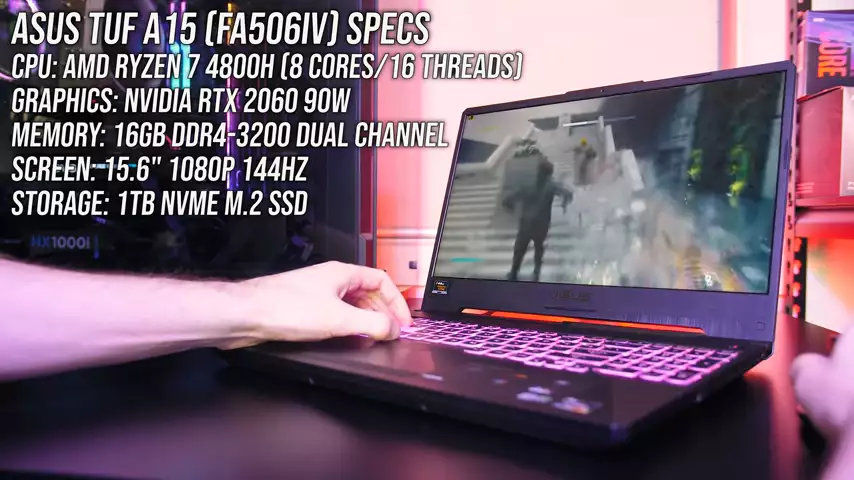 so expect different results with different hardware. I will also be testing the 4600H, 1650 Ti and 1660 Ti options in the future.
so expect different results with different hardware. I will also be testing the 4600H, 1650 Ti and 1660 Ti options in the future.
Air comes in from the bottom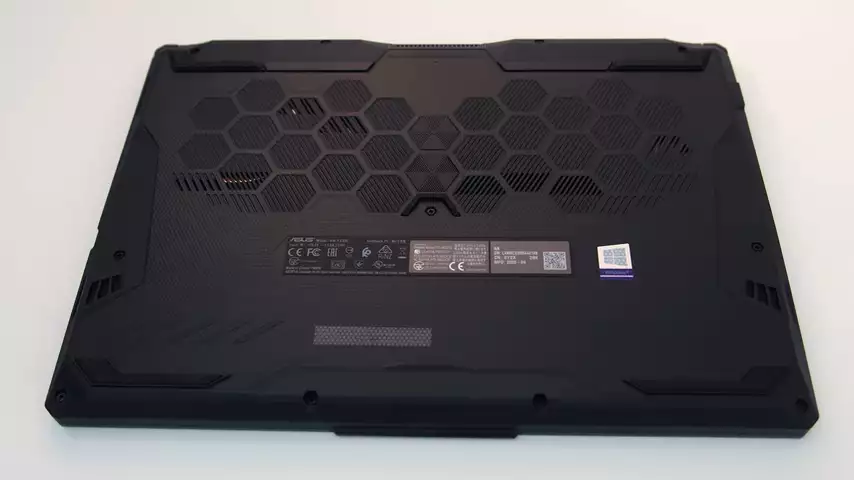 however there are no intake holes directly above the fans, instead air is forced through other holes which may be in an effort to bring air in over other components.
however there are no intake holes directly above the fans, instead air is forced through other holes which may be in an effort to bring air in over other components. 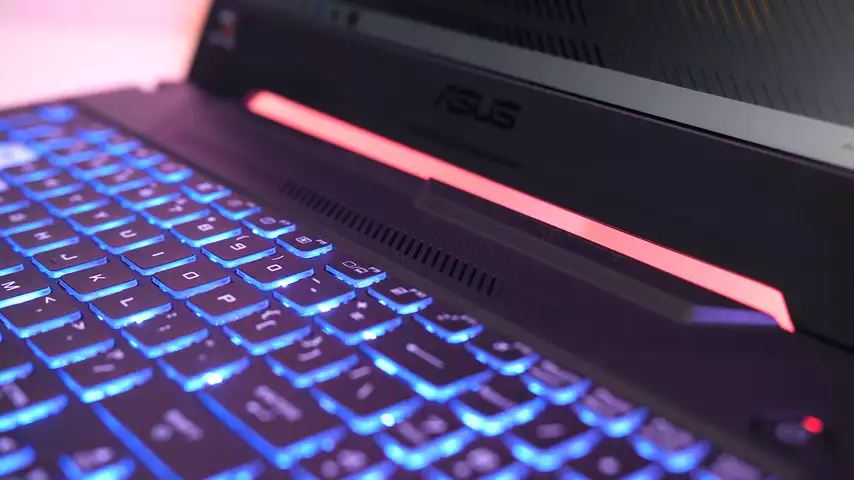 Air also comes in through the vents above the keyboard, and is exhausted out of back corners, and from the vent on the right hand side, there is no exhaust on the left.
Air also comes in through the vents above the keyboard, and is exhausted out of back corners, and from the vent on the right hand side, there is no exhaust on the left. 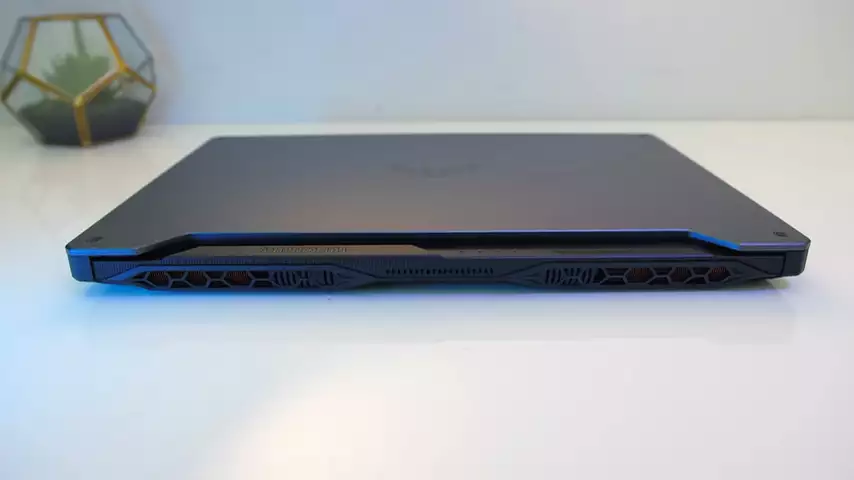 There are a couple of fans inside with heatpipes shared between the CPU and GPUhowever this does actually differ based on the specs,
There are a couple of fans inside with heatpipes shared between the CPU and GPUhowever this does actually differ based on the specs, 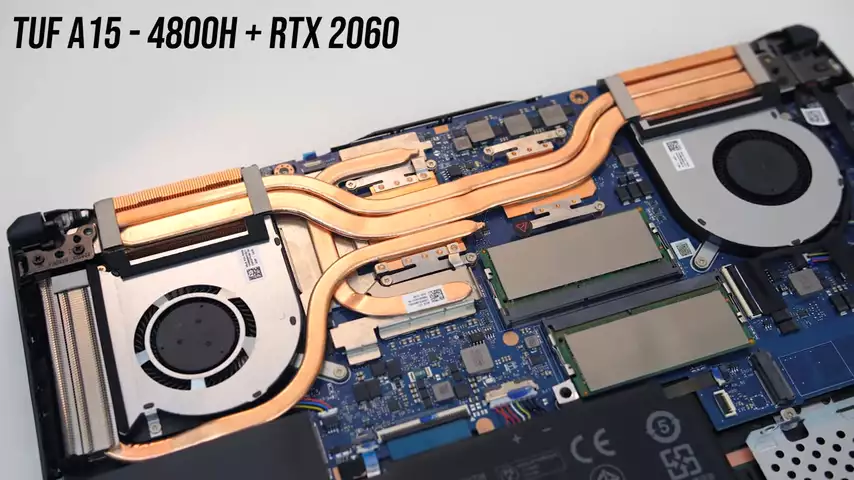
here’s what the insides of the 4600H and 1650 Ti A15 look like, less heatpipes and heatsink comparatively.
The ASUS Armoury Crate software lets you select between different performance modes which from lowest to highest are silent, performance and turbo.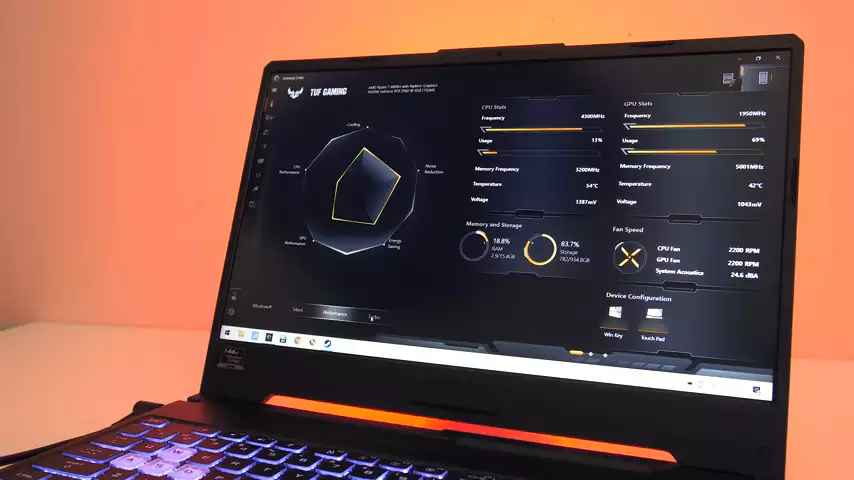 Turbo mode raises the fan speed, but only while under load, it doesn’t just keep it running maxed out. It also applies the following overclock to the GPU. No undervolting to the processor has been done as there’s currently no support for this with Ryzen mobile, however we’ll look at disabling turbo boost later.
Turbo mode raises the fan speed, but only while under load, it doesn’t just keep it running maxed out. It also applies the following overclock to the GPU. No undervolting to the processor has been done as there’s currently no support for this with Ryzen mobile, however we’ll look at disabling turbo boost later.
Thermals were tested with a 21 degree Celsius ambient room temperature. 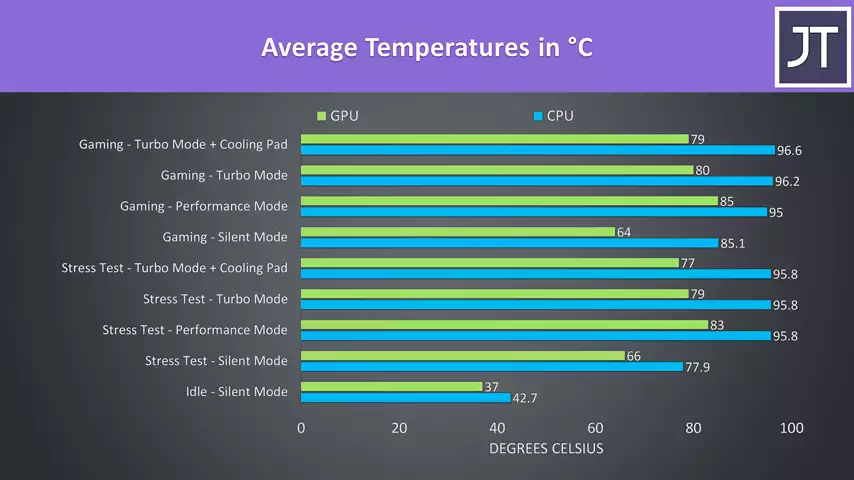 Idle results down the bottom were fine. Worst case stress tests were done with the Aida64 CPU stress test with CPU only checked and the Heaven benchmark at max settings at the same time, and gaming was tested with Watch Dogs 2 as I find it to use a good combination of processor and graphics. While under these loads, silent mode was a fair bit cooler when compared to the others. Performance mode was typically hottest, the processor temperatures were similar to using turbo mode, however the higher fan speed was able to cool the GPU a bit better in turbo.
Idle results down the bottom were fine. Worst case stress tests were done with the Aida64 CPU stress test with CPU only checked and the Heaven benchmark at max settings at the same time, and gaming was tested with Watch Dogs 2 as I find it to use a good combination of processor and graphics. While under these loads, silent mode was a fair bit cooler when compared to the others. Performance mode was typically hottest, the processor temperatures were similar to using turbo mode, however the higher fan speed was able to cool the GPU a bit better in turbo.
Using a cooling pad hardly helped at all, likely due to the unusual vent placement underneath. The CPU may have been thermal throttling in performance and turbo modes, I’m not sure, the software tools still don’t seem to report this for AMD like they do for Intel machines, however based on the fact we’re seeing around the same max temps it seems probable.
These are the average clock speeds while running the same tests. 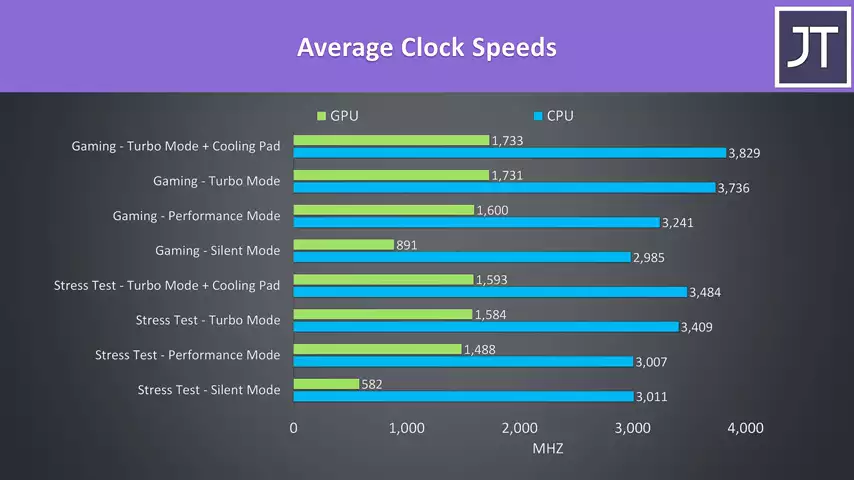 The CPU performance in silent mode isn’t too far below performance mode, however the GPU seems much more harshly limited, we’ll check out game performance shortly.
The CPU performance in silent mode isn’t too far below performance mode, however the GPU seems much more harshly limited, we’ll check out game performance shortly.
Turbo mode improves GPU clock speed as it’s applying that 100MHz overclock to the core, and the processor speeds also see a decent boost here too. Remember this is an 8 core processor, so these speeds are being reached over all cores.
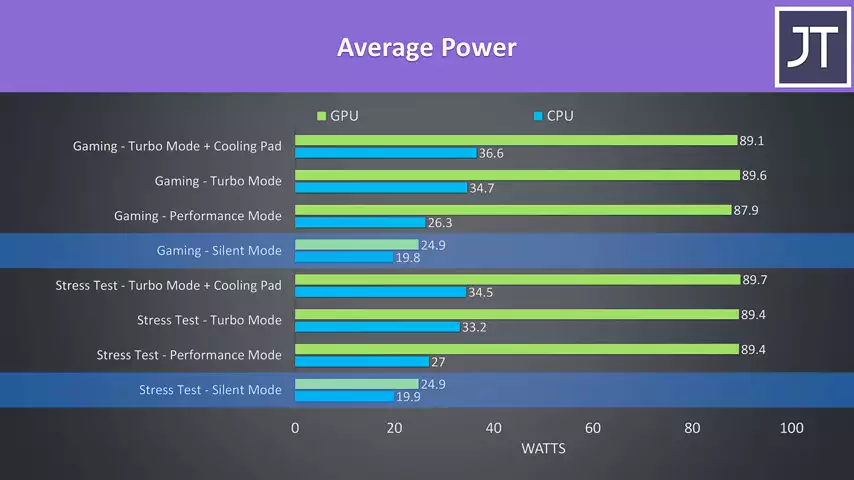 Looking at the power levels being reached, we can see why silent mode was performing so much worse, the GPU seems to get capped to 25 watts while the CPU is allowed 20 watts. In performance or turbo modes however, the RTX 2060 had no issues running up to its 90 watt limit which was good. Best case in turbo mode though we’re seeing around 35 watts for the 4800H in these combined CPU and GPU workloads. It’s worth noting that these are long term averages, for the first few minutes of the workloads the processor would boost much higher.
Looking at the power levels being reached, we can see why silent mode was performing so much worse, the GPU seems to get capped to 25 watts while the CPU is allowed 20 watts. In performance or turbo modes however, the RTX 2060 had no issues running up to its 90 watt limit which was good. Best case in turbo mode though we’re seeing around 35 watts for the 4800H in these combined CPU and GPU workloads. It’s worth noting that these are long term averages, for the first few minutes of the workloads the processor would boost much higher.
Let’s actually see how games perform with these different settings. 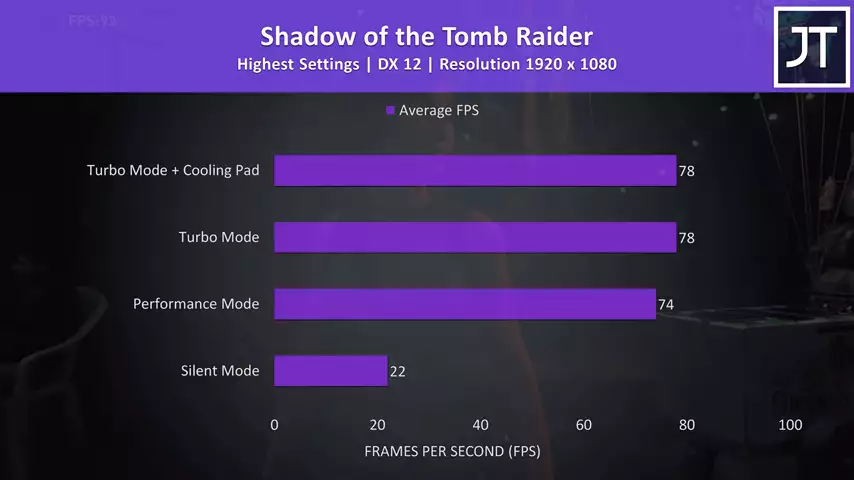 I’ve tested Shadow of the Tomb Raider with the highest setting preset using the game’s benchmark tool. The cooling pad made no change here, and performance mode was only a few FPS behind turbo mode. Silent mode however was far behind, so despite running much quieter it’s far less capable of actually offering a good experience.
I’ve tested Shadow of the Tomb Raider with the highest setting preset using the game’s benchmark tool. The cooling pad made no change here, and performance mode was only a few FPS behind turbo mode. Silent mode however was far behind, so despite running much quieter it’s far less capable of actually offering a good experience.
If you want to see more gaming benchmarks from this TUF A15 where I’ve tested 20 games at all setting levels.
Now let’s take a look at a CPU only workload with the GPU idle. 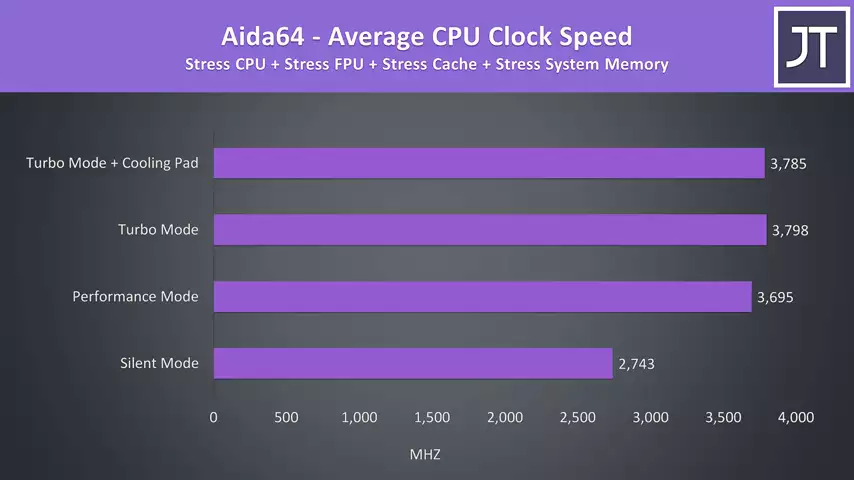
Here are the clock speeds while running the Aida64 CPU stress test with all the default options checked, so we’re maxing out at around 3.8GHz over all 8 cores.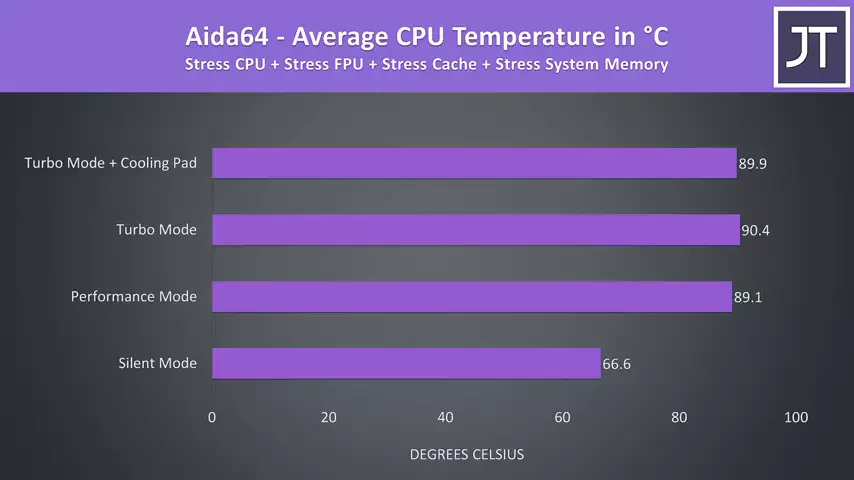 Thermals were getting up to 90 degrees even with the GPU idle, though silent mode was far cooler.
Thermals were getting up to 90 degrees even with the GPU idle, though silent mode was far cooler.
This is because under these processor intensive workloads where the GPU isn’t in use we’re able to consistently maintain around a 47 watt TDP in turbo mode, if you recall when the GPU is active this was around the 35 watt mark.
Here are some Cinebench results to give you an idea of CPU only performance when the GPU is idle. 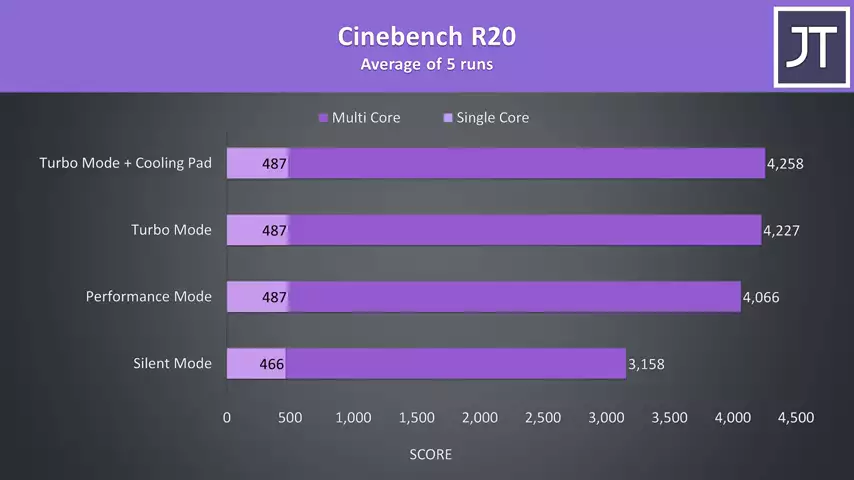 The results are seriously impressive when you keep in mind that the popular 6 core i7 from Intel tops out at around 3200 points in multicore.
The results are seriously impressive when you keep in mind that the popular 6 core i7 from Intel tops out at around 3200 points in multicore. 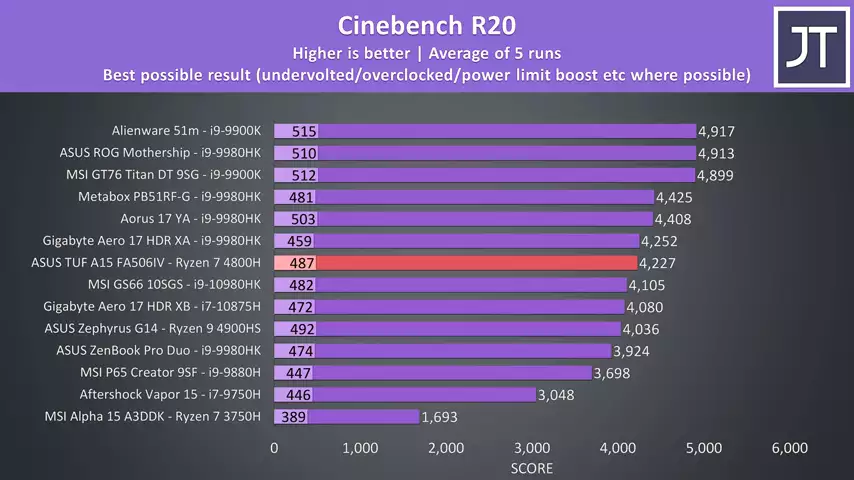 The 4800H is even outperforming 8 core 10th gen processors from Intel, both in single and multicore tests, and don’t forget the ASUS TUF series is meant to be a more budget friendly option, the machines that it’s beating with 8 core Intel chips are thousands of dollars more expensive.
The 4800H is even outperforming 8 core 10th gen processors from Intel, both in single and multicore tests, and don’t forget the ASUS TUF series is meant to be a more budget friendly option, the machines that it’s beating with 8 core Intel chips are thousands of dollars more expensive.
As for the external temperatures where you’ll actually be putting your hands, at idle it was hardly getting to 30 degrees, a good result. 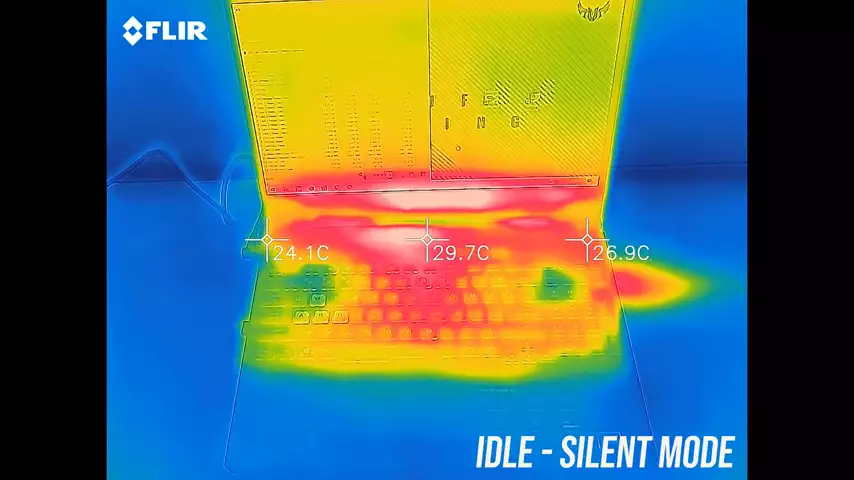 With the stress tests running in silent mode it’s only now a little warm to the touch in the middle, but as we saw earlier performance is down a fair bit in this mode.
With the stress tests running in silent mode it’s only now a little warm to the touch in the middle, but as we saw earlier performance is down a fair bit in this mode.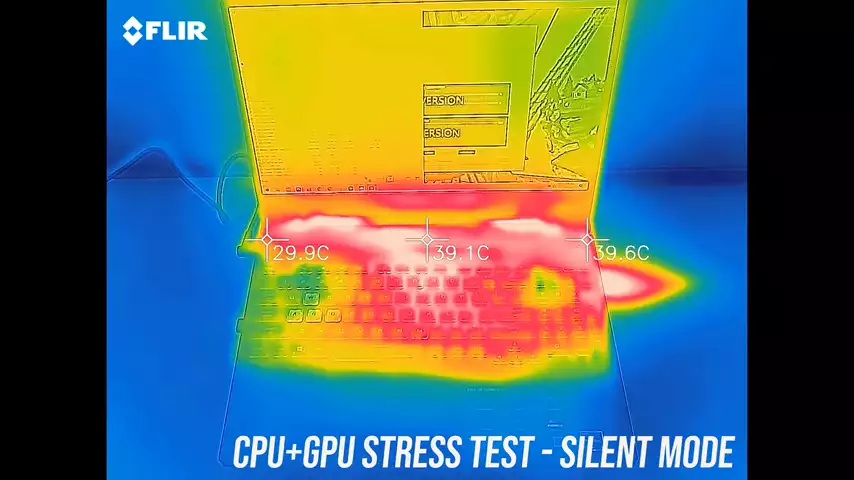 Stepping up to performance mode only results in a few degrees warmer in the middle, and then in turbo mode with the fan at full speed it’s slightly cooler, this is a great result.
Stepping up to performance mode only results in a few degrees warmer in the middle, and then in turbo mode with the fan at full speed it’s slightly cooler, this is a great result.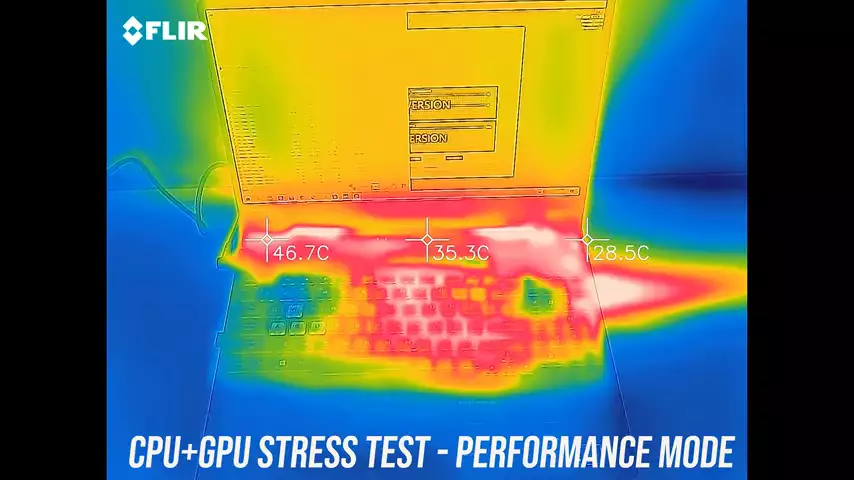 The WASD area was very cool, so air may be pulled in through the keyboard too.
The WASD area was very cool, so air may be pulled in through the keyboard too.
Unlike metal, the plastic chassis doesn’t conduct heat quite as much, so overall it felt cool compared to the internal temperatures.
The fans were still audible at idle in silent mode. With the stress tests going in silent mode it’s only a little louder, performance mode boosts fan speed significantly, and then turbo is louder still. Given performance mode still gave us good results, it is possible to run things well without being so loud, however silent mode offered much weaker performance for games. Unfortunately there was no custom fan control that I could see. We’ve got the option of disabling processor boosting if you want to prioritize thermals at the expense of CPU performance. Basically by doing this, the 4800H runs at its 2.9GHz base clock and does not boost, we can see how this affects performance in Cinebench, the capped result is at the top.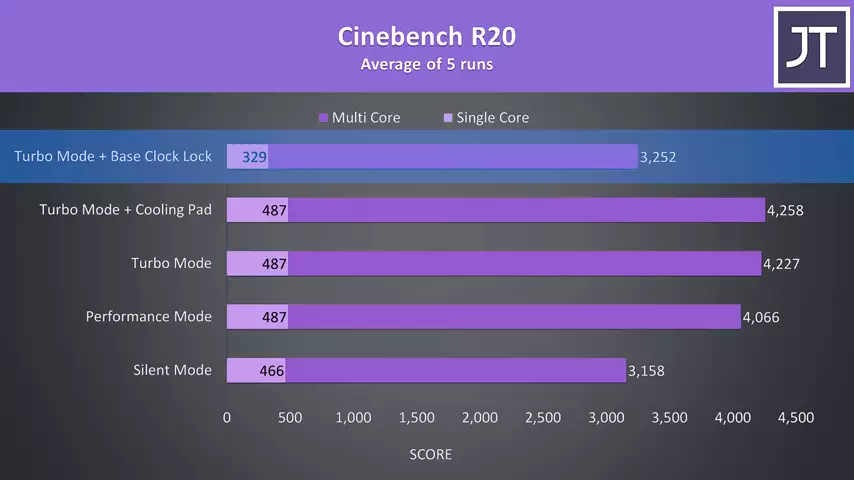 When running our game, we can see that the GPU is able to clock a little higher now, however the CPU is a little lower than what we’re getting in silent mode.
When running our game, we can see that the GPU is able to clock a little higher now, however the CPU is a little lower than what we’re getting in silent mode. 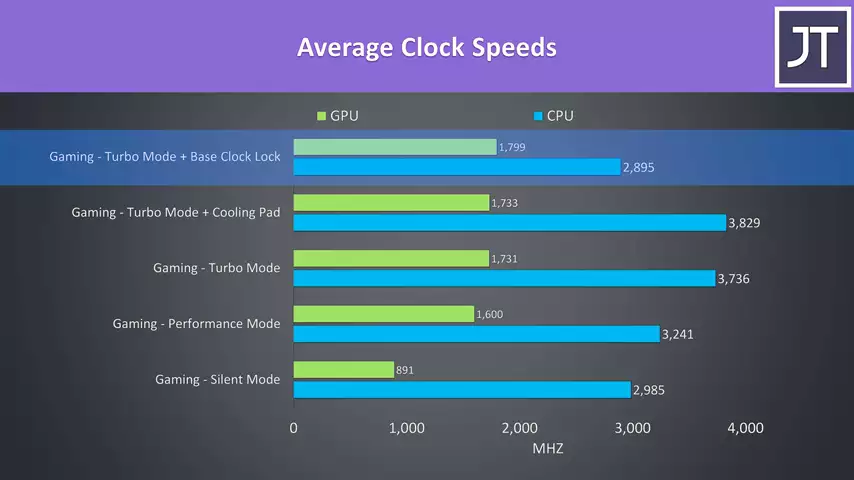 The GPU temperature is similar to what we saw earlier, though the CPU is much cooler now at just over 80 degrees.
The GPU temperature is similar to what we saw earlier, though the CPU is much cooler now at just over 80 degrees.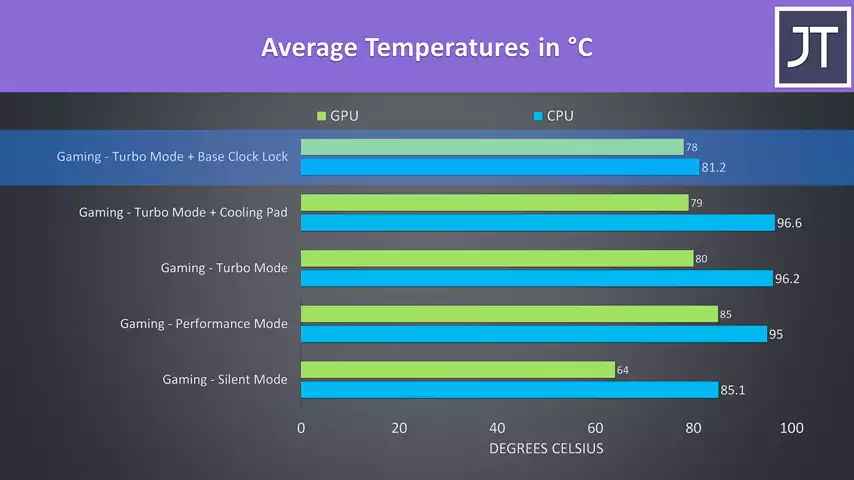 The CPU power is around 20 watts like we saw in silent mode, but by doing this the GPU is still able to run at full power
The CPU power is around 20 watts like we saw in silent mode, but by doing this the GPU is still able to run at full power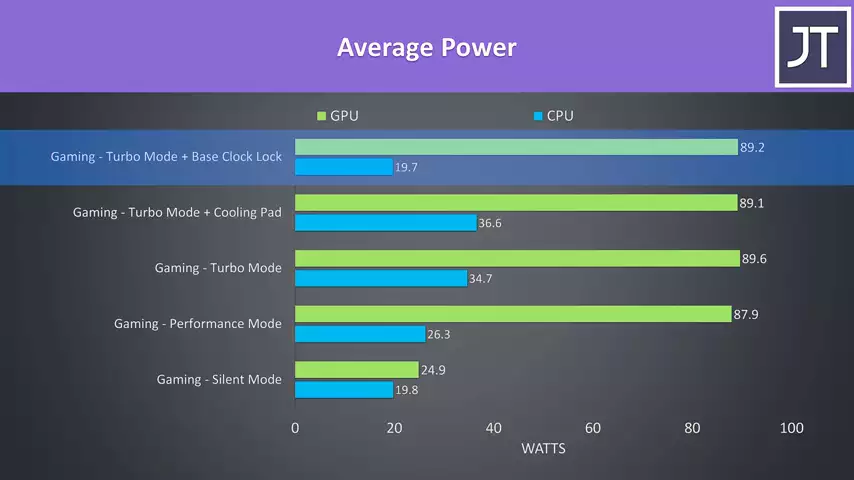 so many games particularly ones that are more GPU heavy should still perform quite well like this.
so many games particularly ones that are more GPU heavy should still perform quite well like this.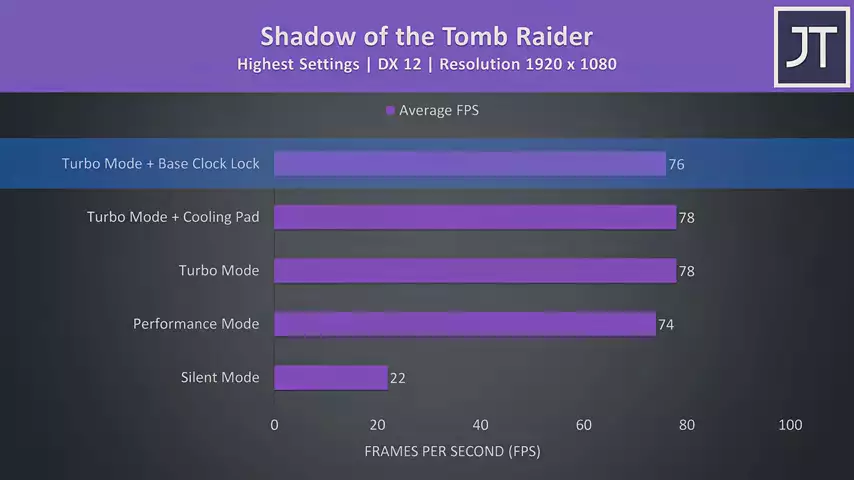
Personally I’d prefer the higher performance at the expense of heat, but that’s me, either way you have this option.
In processor intensive titles I’d expect weaker 1% low performance and perhaps some stuttering, it will vary by game, you’ll just have to test it out and see if it works for you.
Alright, so the TUF A15 with these higher end specs can run on the hotter side, I was seeing up to 96 degrees Celsius on the Ryzen 7 4800H processor, though to be fair it does have 8 cores 16 threads and it was beating many 8 core Intel counterparts that cost a lot more money.
As we saw it was possible to limit processor performance should you want to prioritize cooler temperatures though, in games that are GPU heavy the lower CPU performance shouldn’t make that much difference. Despite the higher temperatures, the performance was still quite good in performance and turbo modes, though these seem to be the only method of controlling fan speed, it would have been good if ASUS gave the user manual control.
The plastic body was beneficial in that no matter what, the keyboard deck barely felt warm even under worst case load. Using a cooling pad didn’t really help in any of these tests, so it doesn’t seem worth using with the TUF A15, and this seems to be due to the holes on the bottom that aren’t directly above the intake fans. I guess if you’re willing to mod the bottom panel with some holes, that may improve thermals.
These differences in performance shown aren’t hard and fast rules, there are different factors which will vary results, primarily the temperature of the room you’re running in, application of thermal paste, and even the specific hardware which comes down to the silicon lottery. It may be possible to further improve temperatures by swapping the thermal paste, however as this is a review unit that I have to send back I’m not able to change the paste, otherwise the next reviewer will unknowingly report different results due to what I’ve done.
Let me know what you thought about the thermals from the ASUS TUF A15 gaming laptop down in the comments.


Comments (1)